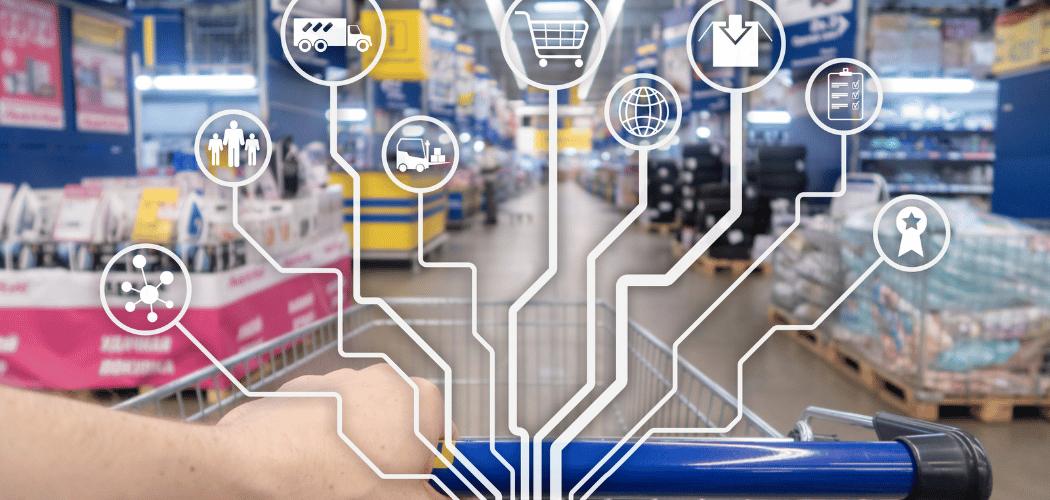Little-Known Reward Perks from Amazon, Starbucks & Ikea
Retailers budget a lot of marketing dollars for their loyalty programs. Yet examples of unknown programs, perks and features abound. These examples suggest that even big brands under-promote aspects of their programs. Here’s what retail marketing can learn from them.
Think of them as the size 5-shoes stored against the back wall of a department store. Or the small heap of kiwi fruit between displays of mangoes and cherries. Like a few very good, in-demand products, some loyalty program offerings receive little attention.
Whether promoting a niche feature or an entire program, the marketing budgets of retail reward initiatives are inconsistent. This makes sense. Reward programs are constantly following inconsistent consumer behaviors, and are under increasing pressure to test new technologies. This can get pricey.
U.S. companies now earmark up to one-third of their marketing dollars to loyalty initiatives, reports Statista. Yet even the best-known programs are likely to include a feature or benefit known only to a few members.
Bestsellers, Refills, Umlauts And More: 3 Marketing Opportunities
Perhaps under-marketed perks or programs are intentionally under the radar (like Costco Next). The retailer might not prioritize them, or haven’t analyzed their data well enough to gauge their potential. Following are a few examples.
1. An Amazon Prime perk that’s hardly covered. Through Amazon’s Prime Reading benefit, members can access a rotating collection of more than 3,000 digital books, audiobooks, magazines and comics – including bestsellers – on the Kindle app or other device. Amazon First Reads, meanwhile, provides free and early access, via downloads, to one newly released book each month. Amazon recognizes members “might not be using” these benefits.
Marketing cover: Retailers can audit member activity monthly to gauge which rewards members redeem, then direct emails to high-value members pointing out underused benefits. This exercise also could reveal which perks result in more purchases, and which do not. (Amazon has highlighted underused benefits in a blog post, but members have to find it.)
2. Ikea rewards program – lost in the store? Maybe it’s because most shoppers visit Ikea infrequently, but its Ikea Family loyalty program is under the radar. Still, its website is smartly designed – well organized, vibrant and easy to navigate, with perks that include extended price protection, free coffee or tea, free workshops and access to member-only events (such as the Ikea Midsummer Days). Bonus: Umlauts.
Marketing Allen wrench: Unless an organization wants its rewards program to be a secret treasure, it should tell shoppers about it outside the store and website. Start with a basic roadmap: Retailers can pinpoint where high concentrations of its shoppers live, then alert them via direct mail. Or it can post a billboard 10 miles outside on an Ikea city; turning road traffic into foot traffic.
3. Starbucks rewards cups are half full. The coffee chain in the past year has given us mugs that are half grande, and half empty. Among grande perks: Starbucks in April 2022 began issuing 25 bonus Stars to members who bring in their reusable cups, plus 10 cents off their drinks. But in the same year, Starbucks stopped adhering those peel-off “Star Reward” stickers to its bags of coffee sold at retail. This eliminated a convenient way for members to earn points.
Marketing perk: It might be possible to combine these two changes into one short-term perk. Bags of Starbucks coffee sold at the supermarket could include peel-off coupons with discounts on purchases of Starbucks reusable cups, rather than with Stars. Members can learn from these coupons the perks earned by reusing the cups and feel it’s a fair trade.
4 Foundational Requirements For Everyday Loyalty
Regardless of how a retailer allocates its loyalty marketing budget, it can maximize each dollar if it first adopts the essentials that secure its foundation. Here are four that are applicable today.
Ensure you’re collecting the correct insights. Experience demonstrates that a retailer only needs 12 to 14 pieces of data to achieve its loyalty goals. So before launching a rewards program into the consumer-sphere, a retail marketer should ask: What is the goal of the data we’ll be gathering? There will be variables: A retailer can market to active members to increase big-ticket purchases, while also trying to engage lapsed members. Meanwhile, it might need to promote certain goods to all of the above to improve category performance. A/B testing, or the service of a proven third-party provider, will help.
Know where you need to be, when. Before testing new channels, like livestreams, retail marketers should measure the many ways their members engage and then streamline accordingly. If a small share of active members respond to email, a retailer can test incentives to transition them to texts. It should fold in mitigating factors, such as the cadence of the messages and the times of day promotions are sent. Chipotle knows, for example, that many of its members prefer its mobile app, so it ensures new menu items and double-point challenges are loaded there, at appropriate meal or munchie times.
Be more experiential and less promotional. A rewards program has to engage through experiences to maintain member interest. They can even come in the form of currency – instead of points, a set number of purchases can earn a virtual cooking class. NASCAR, for example, has an exceptionally dedicated fan base, but most of its reward members view the races from home, not the track. So it’s incorporated nearly a dozen experience-based earnings options into its Fan Rewards program, including for camping (NASCAR tailgates last a long time) and playing NASCAR Fantasy Live. Members can use their points for NASCAR products or more gated experiences.
Bring a data wizard on board. In 2022, 77% of corporate C-suites – from Estée Lauder to Walmart – included a chief data officer, according to an executive survey by NewVantage Partners. This figure speaks to how important customer data is to company performance. A good data chief will give the analytics staff freedom to follow unexplored data paths, while doggedly maintaining often-overlooked tasks, such as systematically rooting out bugs. Lucrative marketing insights are more likely to spring forth this way; it sure beats writing reports that analyze what has already happened.
Market The Fruits Of Your Loyalty Labor
Marketing a rewards initiative can be a tricky task, in part because these programs are typically considered marketing tools themselves. Perhaps this is a mistake. Loyalty programs have evolved into a complete channel; one that defines the retail experience as much as a company’s website and stores.
Think: If the “kiwis” are hard to find, will the customer just leave and get them somewhere else? All the fruits of the reward program’s labor should be given a chance.
This article originally appeared in Forbes.
Forbes.com retail contributor Jenn McMillen is nationally renowned as the architect of GameStop’s PowerUp Rewards, and is Founder and Chief Accelerant of Incendio, a firm that builds and fixes marketing, consumer engagement, loyalty and CRM programs. Incendio provides a nimble, flexible and technology-agnostic approach without the big-agency cost structure and is a trusted partner of some of the biggest brands in the U.S.





